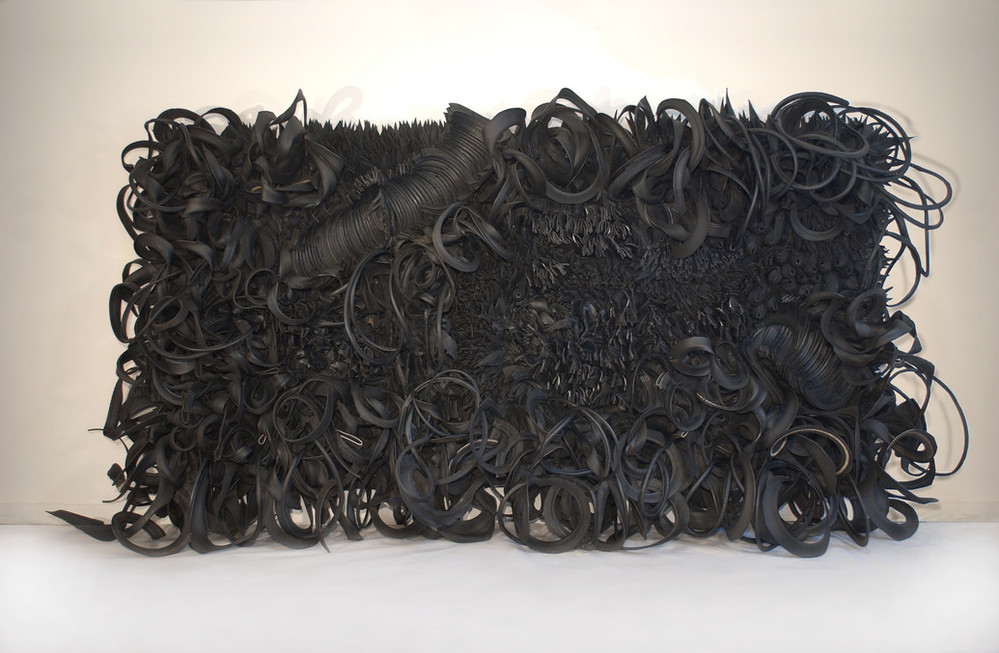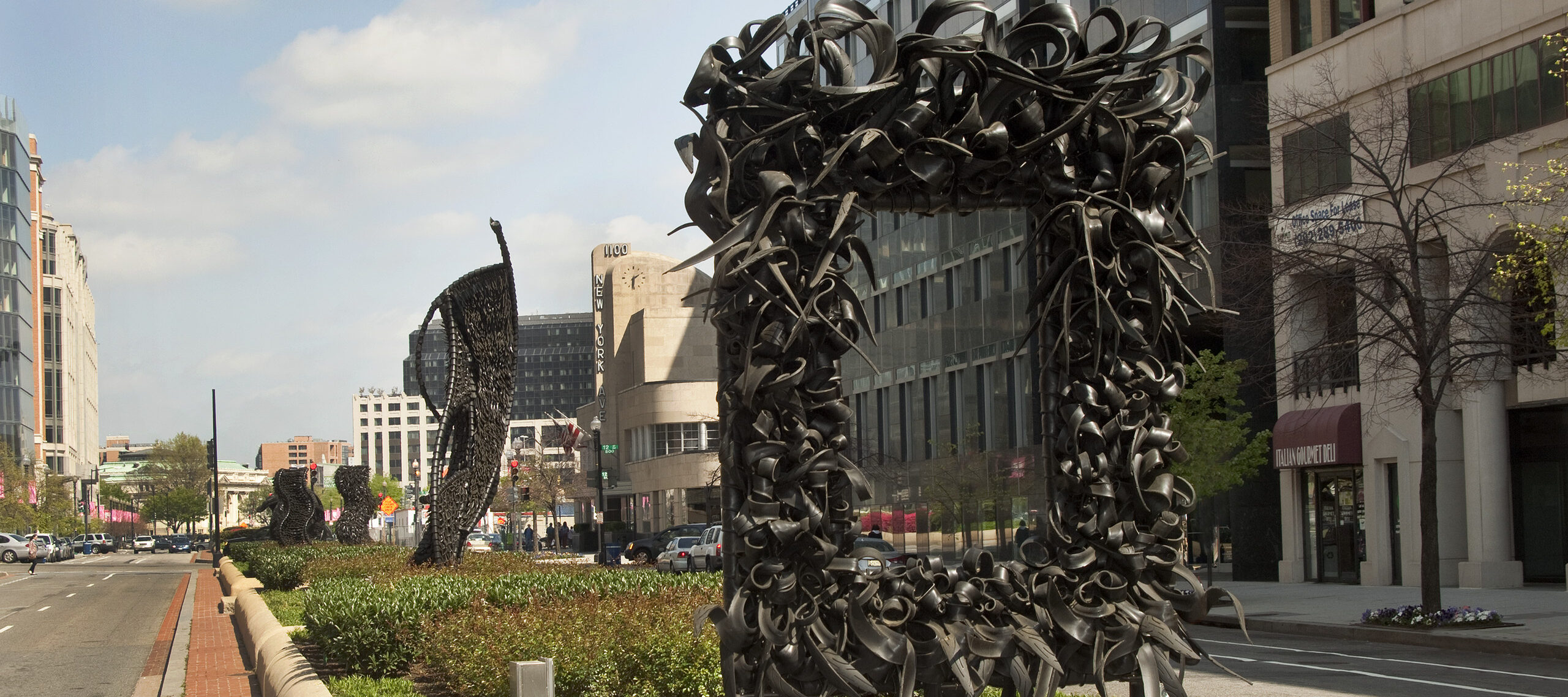Impress your friends with five fast facts about Chakaia Booker (b. 1953), whose work is on view in NMWA’s collection galleries.
1. Sew Perfect
Sewing skills Booker learned from female relatives have served her well. As a teenager, struggling to find properly fitted clothing, she created custom couture by deconstructing and altering apparel. Early in her career, Booker made vests out of discarded materials like orange peels and bottle caps. Today, she regularly dons voluminous headdresses of vibrant fabrics.
2. Detritus Designs
Artists who use found objects shine a light on the beauty of the banal. Booker sculpts primarily with old tires she collects from car repair shops and salvage yards. Louise Nevelson (1899–1988), an inspiration to Booker, created monochromatic masterpieces with wood scraps. Harmony Hammond (b. 1944) sourced fabric for her wrapped works from New York City sweatshops.
3. Sense-ual
Booker’s works engage multiple senses. Her manipulation of materials—slicing, weaving, twisting, and inverting—make for dynamic, visually-compelling compositions. The varying texture of tires—smooth sidewalls, ribbed inner liners, spiky steel belts, and bumpy treads—tempt us to touch. The sculptures’ acrid odors recall city smells and factory emissions.
4. Wheel Deal
Booker has compared tires wearing down to human experience and aging. The ridges and grooves of treads recall finger prints, wrinkled skin, and body scarification. Close inspection reveals embossed tire codes that provide essential details about each tire including manufacture location and date. The life and landscape of each human body is distinctive; so are Booker’s tires.

5. In the Public Eye
Historically, large-scale artworks and public sculptures have been the territory of male artists. Since 2010, NMWA’s outdoor New York Ave Sculpture Project has celebrated pioneering women artists who have bucked tradition, including Magdalena Abakanowicz (1930–2017), Booker, Betsabeé Romero (b. 1963), and Niki de Saint Phalle (1930–2002). Romero’s work, also made of tires, is on view until September 2020.
